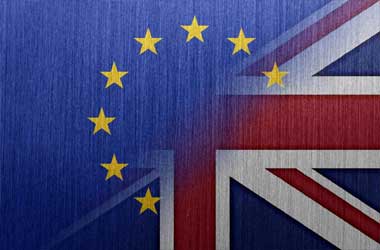 As a result of higher costs for energy and food, consumer prices in the United Kingdom increased further in May at the quickest rate in forty years, significantly aggravating the nation’s affordability issue. According to statistics that were released by the Office for National Statistics on Wednesday, consumer price inflation increased to 9.1 percent in May, which was in line with predictions after coming in at 9.0 percent in April. According to the ONS, the consumer price index would have been at its highest point since about the year 1982.
As a result of higher costs for energy and food, consumer prices in the United Kingdom increased further in May at the quickest rate in forty years, significantly aggravating the nation’s affordability issue. According to statistics that were released by the Office for National Statistics on Wednesday, consumer price inflation increased to 9.1 percent in May, which was in line with predictions after coming in at 9.0 percent in April. According to the ONS, the consumer price index would have been at its highest point since about the year 1982.
ONS Chief Economist Grant Fitzner made the following statement in response to the inflation numbers released today for the month of May: “The annual inflation rate remained mostly unchanged in May, despite the fact that it is currently at historically high levels.”
Clothing costs increasing by less than they did at this time last year and a decline in the often shifting pricing of computer games helped to balance the continued strong price increases in food and the record high prices of gasoline, according to Fitzner. According to Paul Dales, an economist at Capital Economics, the most recent moderate increase in inflation will not stop the Bank of England from raising interest rates further; however, it may encourage the central bank to opt again for a 25 basis point rate hike at its next meeting in August rather than upping the ante with a half percentage point hike. This is because the most recent moderate increase in inflation is still relatively low.
During the meeting in June where the policy was decided, the BoE projected that inflation would be higher than 11 percent in October. The Bank of England (BoE) had hiked the interest rate by a quarter-point to 1.25 percent, which was the highest it had been since the beginning of 2009, in order to tackle the increasing inflation.
According to ONS, consumer prices increased by 0.7 percent month-over-month in May, which is substantially less than the 2.5 percent rise that was recorded in April. It was anticipated that there would be a 0.6 percent increase in prices. Core inflation decreased to 5.9 percent from 6.2 percent in April after excluding the costs of energy, food, alcoholic drinks, and tobacco products. Six point zero percent was the anticipated rate.
In the twelve months leading up to May, the consumer prices index, which takes into account the expenses of housing paid by owner-occupiers, increased 7.9 percent, which is an increase from the 7.8 percent increase recorded in April. According to the statistics office, the rate has not seen a significant increase since April 1991 in the developed historic estimates. After an increase of 14.7 percent in April, another data from the ONS showed that output prices increased at a quicker pace of 15.7 percent on year. It was anticipated that there would be no change in the rate, which now stands at 14.7 percent.
The increase in production prices from one month to the next was 1.6 percent, which was lower than April’s 2.8 percent growth. Since February of 2022, this was the first time that the monthly pace has slowed down. It was anticipated that the rate will drop to 1.5 percent. While everything was going on, the prices of inputs saw yet another month of double-digit growth, this time at a rate of 22.1 percent annually, which is a faster increase than the 20.9 percent seen in April. Economists had anticipated that the rate of inflation would moderate to 19.4 percent.
The annual increase in the cost of materials and labor decreased to 2.1 percent in May, down from 2.7 percent in April. Following a record high of 4.9 percent in March, the monthly rate dropped for the second consecutive month, bringing it down to a lower level.




